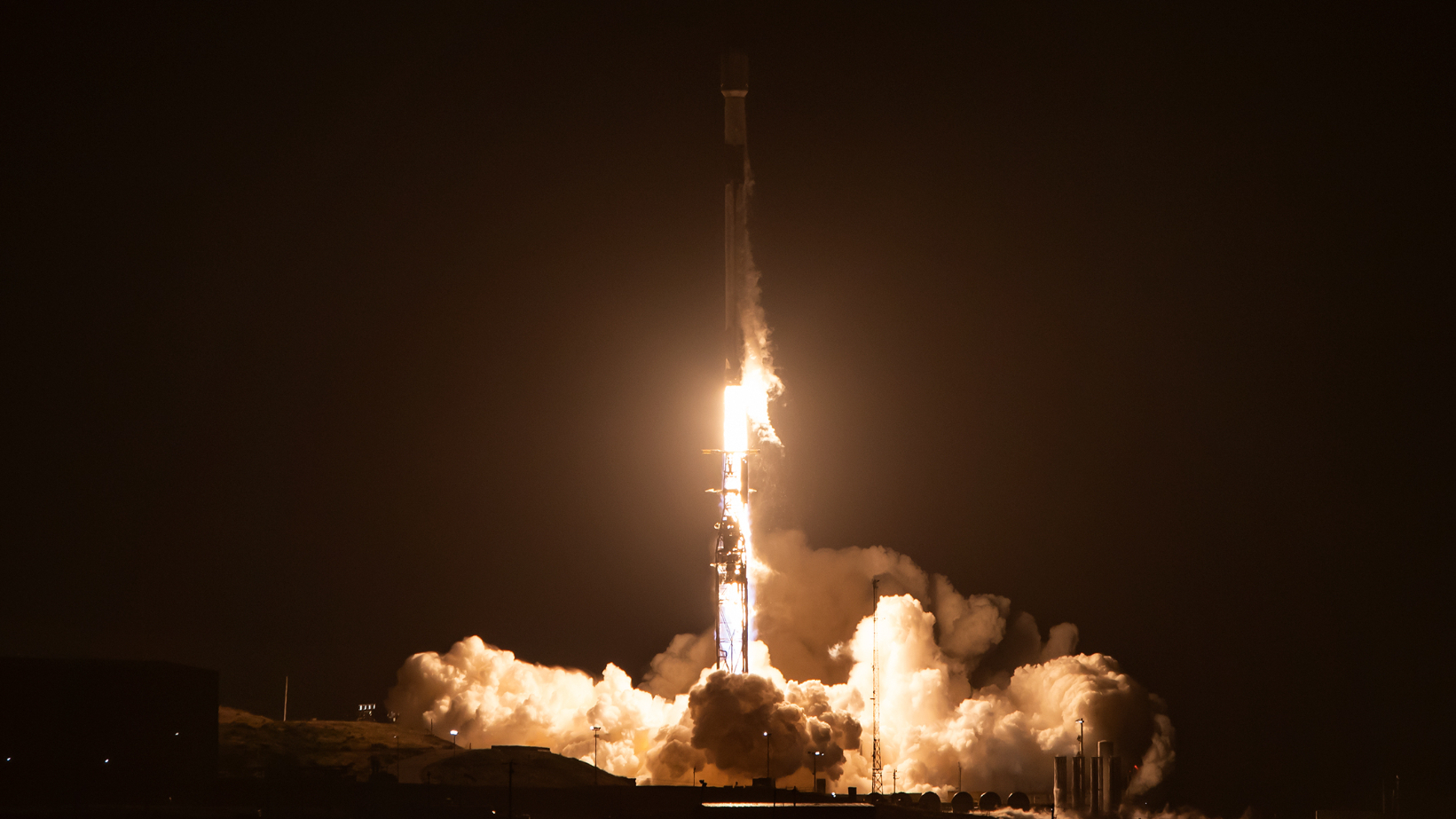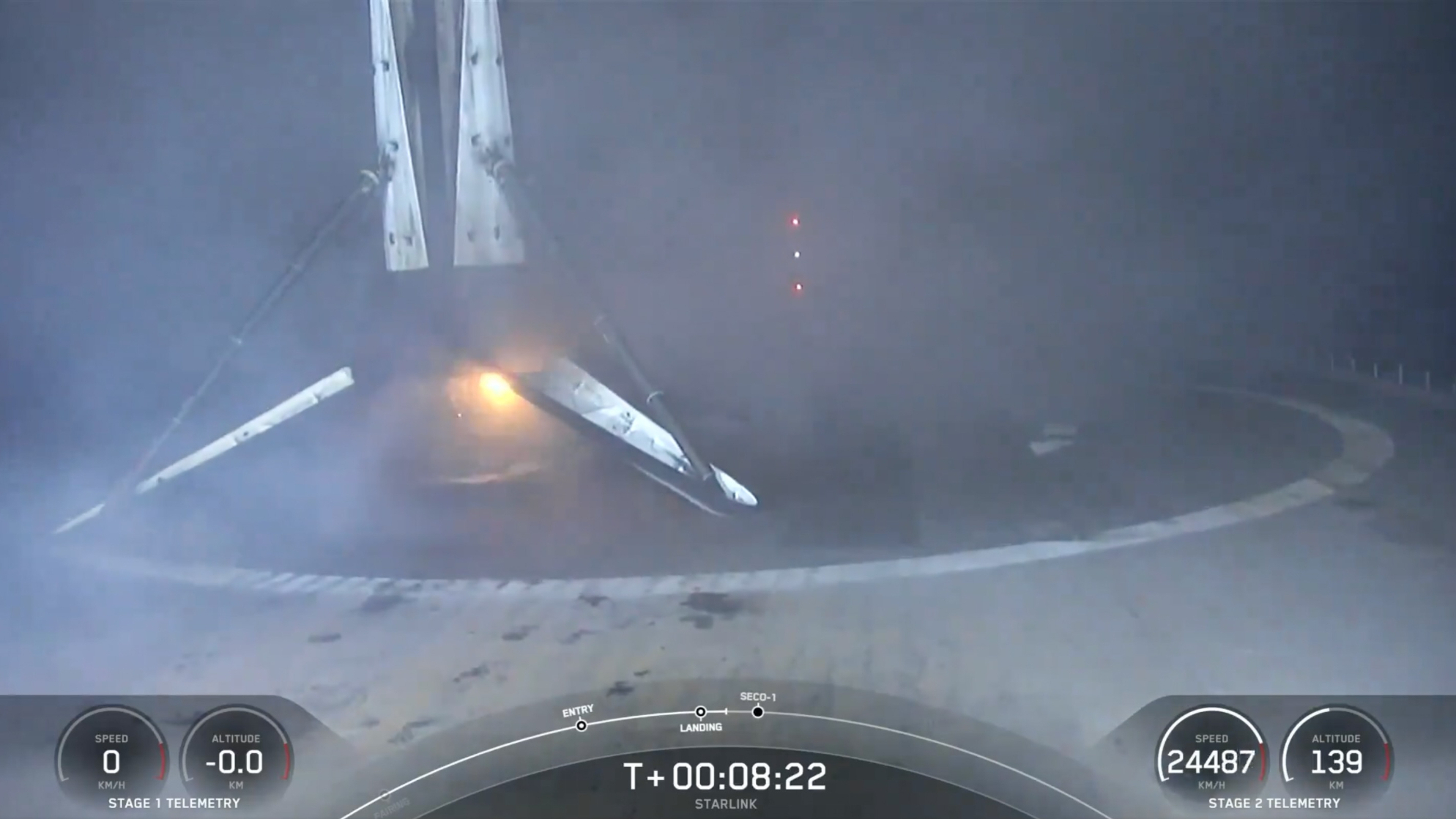SpaceX launched 20 Starlink internet satellites from California early Friday morning (May 10), including 13 with direct-to-cell capability.
A Falcon 9 rocket topped with the Starlink craft lifted off from Vandenberg Space Force Base on Friday at 12:30 a.m. EDT (0430 GMT; 9:30 p.m. on May 9 local California time). SpaceX had originally planned to launch the mission on Wednesday night (May 8) but stood down from that attempt.
The Falcon 9's first stage came back to Earth about 8 minutes after launch as planned, touching down on the SpaceX droneship Of Course I Still Love You, which was stationed in the Pacific Ocean.
Related: Starlink satellite train: How to see and track it in the night sky

It was the 4th launch and landing for this particular first stage, according to a SpaceX mission description.
The Falcon 9's upper stage, meanwhile, continued carrying the Starlink satellites to low Earth orbit (LEO), eventually deploying them there about 61.5 minutes after liftoff.
SpaceX just launched a Starlink mission on Wednesday, sending 23 of the satellites to LEO from NASA's Kennedy Space Center in Florida.
Get the Space.com Newsletter
Breaking space news, the latest updates on rocket launches, skywatching events and more!

Back-to-back launches are far from a novelty for SpaceX these days. On March 30, for example, the company launched two missions — a Starlink batch and the Eutelsat 36D telecommunications satellite — less than four hours apart, both of them from Florida's Space Coast.
Editor's note: This story was updated at 12:30 a.m. ET on May 9 with news of the new target launch date of May 9, then again at 2 a.m. ET on May 10 with news of successful launch, rocket landing and satellite deployment.
Join our Space Forums to keep talking space on the latest missions, night sky and more! And if you have a news tip, correction or comment, let us know at: community@space.com.

Michael Wall is a Senior Space Writer with Space.com and joined the team in 2010. He primarily covers exoplanets, spaceflight and military space, but has been known to dabble in the space art beat. His book about the search for alien life, "Out There," was published on Nov. 13, 2018. Before becoming a science writer, Michael worked as a herpetologist and wildlife biologist. He has a Ph.D. in evolutionary biology from the University of Sydney, Australia, a bachelor's degree from the University of Arizona, and a graduate certificate in science writing from the University of California, Santa Cruz. To find out what his latest project is, you can follow Michael on Twitter.









